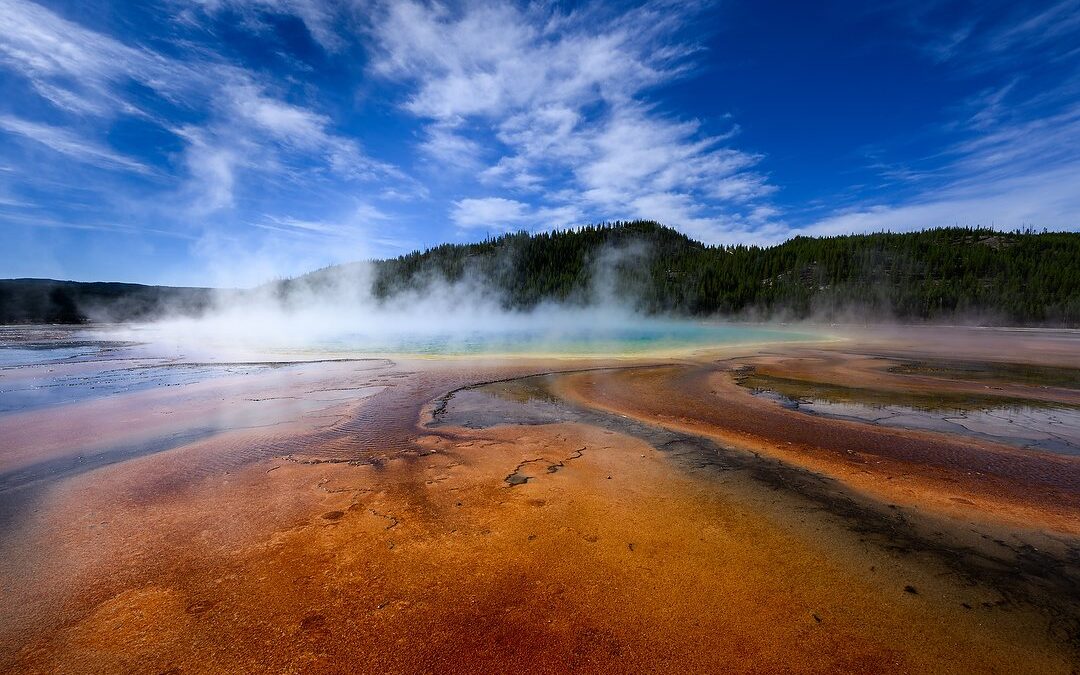Over nearly twenty years of leading photo trips for Popular Photography’s Mentor Series, I had the pleasure of going to Montana many times. In partnership with the state’s department of tourism, the magazine would run a photo trip there almost every year, and either Glacier or Yellowstone would be one of the highlights. Sadly, Mentor Series ended when the magazine stopped publishing in 2017. But that didn’t stop me from wanting to return and lead another photo trip. Fortunately, I knew just the person to do it with.
Donnie Sexton was the photographer for the Montana Office of Tourism until retiring a few years ago. Since then she’s taken up travel writing, combining her talents behind the camera with words and a passion for exploring the world. She’s also a good friend, and we’ve been together on many trips outside Montana (most recently Tanzania in July). So I started talking to Donnie a few years ago about putting together a Montana trip again, and that’s what we did last week.
While Yellowstone National Park was where we spent the bulk of our time, we also took advantage of Donnie’s vast knowledge of all things Montana to visit a couple of ghost towns and a ranch, and arranged for people to photograph at both places. Below you’ll find some of the photos we made, and the stories behind them. And if you, too, are interested in seeing Montana, let me know. Donnie and I are planning another trip in 2024, this time to less well-known locations in the state. Should be fun!
(Technical notes: for this trip I brought along a Nikon Z 8, Nikon Z 6 converted to full spectrum for infrared, Nikkor 14-30mm f/4 lens, Nikkor 40mm f/2 lens, Nikkor 24-200mm f/4-6.3 lens and Nikkor 180-600mm f/5.6-6.3 lens. Also a polarizing filter, ten-stop neutral density filter and three-stop graduated neutral density filter, plus a compact Peak Designs travel tripod)

Ever since my first visit, I’ve loved the travertine terraces at Mammoth Hot Springs. It’s an otherworldly location, made even more so when photographed in infrared, like this. Nikon Z 6 converted to full spectrum, Aperture Priority, Preset white balance, ISO 100, 1/125 at f/10 in Matrix metering, +2.0 EV, Nikkor Z 14-30mm f/4 S lens at 15mm.
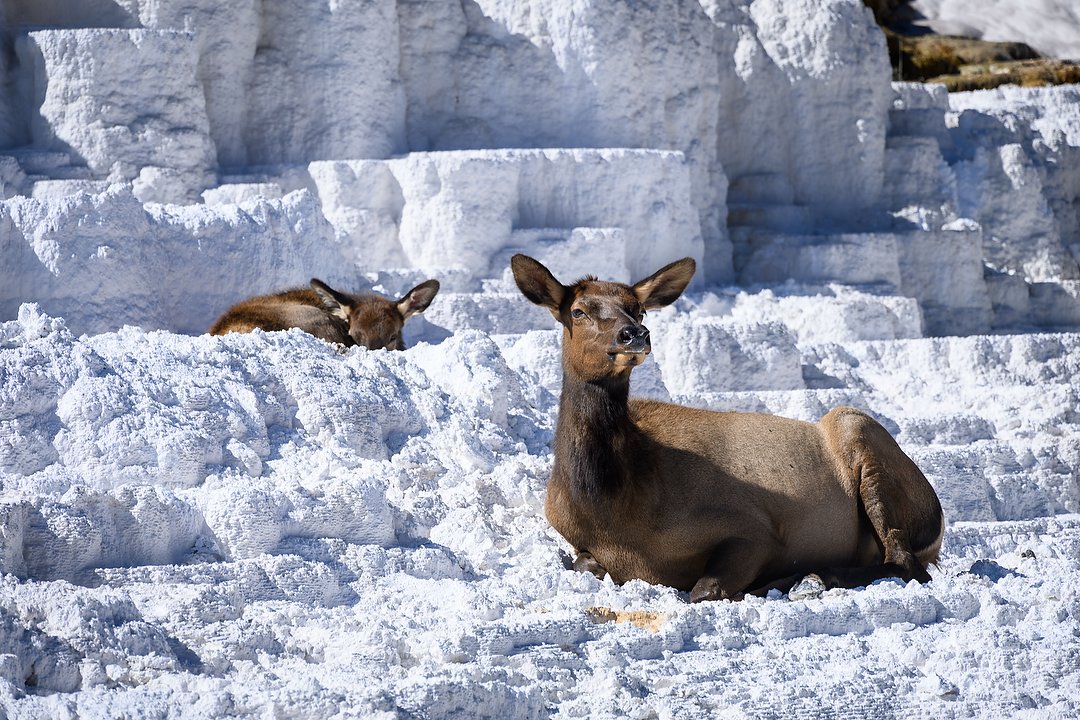
As we were preparing to leave the terraces, one of our group discovered an elk and calf that decided to camp out on some of them. We grabbed our cameras and returned. My co-leader on the trip, Donnie Sexton, said in that in her many visits there while working for the Montana Office of Tourism, she’d never seen this. Nikon Z 8, Aperture Priority, Sunny white balance, 5210K, ISO 64, 1/250 at f/8 in Matrix metering, +0.7 EV, Nikkor Z 24-200mm f/4-6.3 VR lens at 200mm.
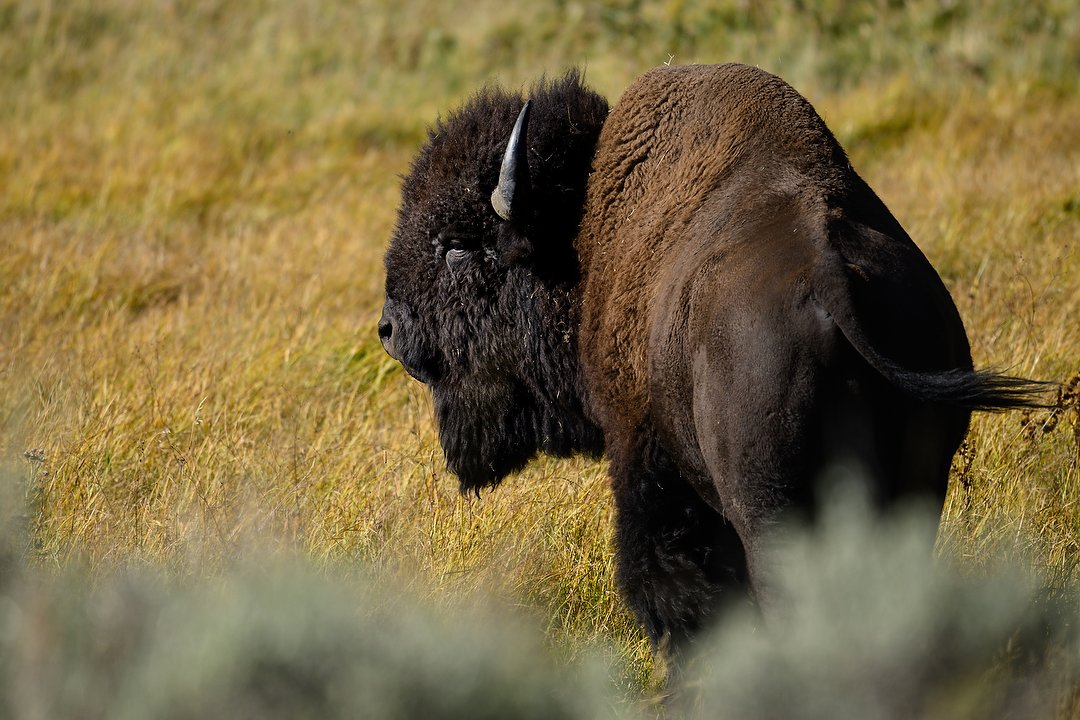
Lamar Valley is one of the best places in the park to see wildlife, which is why we spent an entire afternoon there. Lots of bison to be seen, but the trick is finding ones close enough to the road to make good pictures. Nikon Z 8, Aperture Priority, Sunny white balance, ISO 560, 1/1600 at f/6.3 in Matrix metering, -0.3 EV, Nikkor Z 180-600mm f/5.6-6.3 VR lens at 600mm.

Pronghorn are often seen in Lamar Valley as well. We were lucky to find a few of them in late day light as we were leaving. Getting out of our car and sitting in the grass gave us a more intimate low angle, shooting through the grass. Nikon Z 8, Aperture Priority, Sunny white balance, 5210K, ISO 500, 1/1600 at f/6.3 in Matrix metering, 0.0 EV, Nikkor Z 180-600mm f/5.6-6.3 VR lens at 600mm.
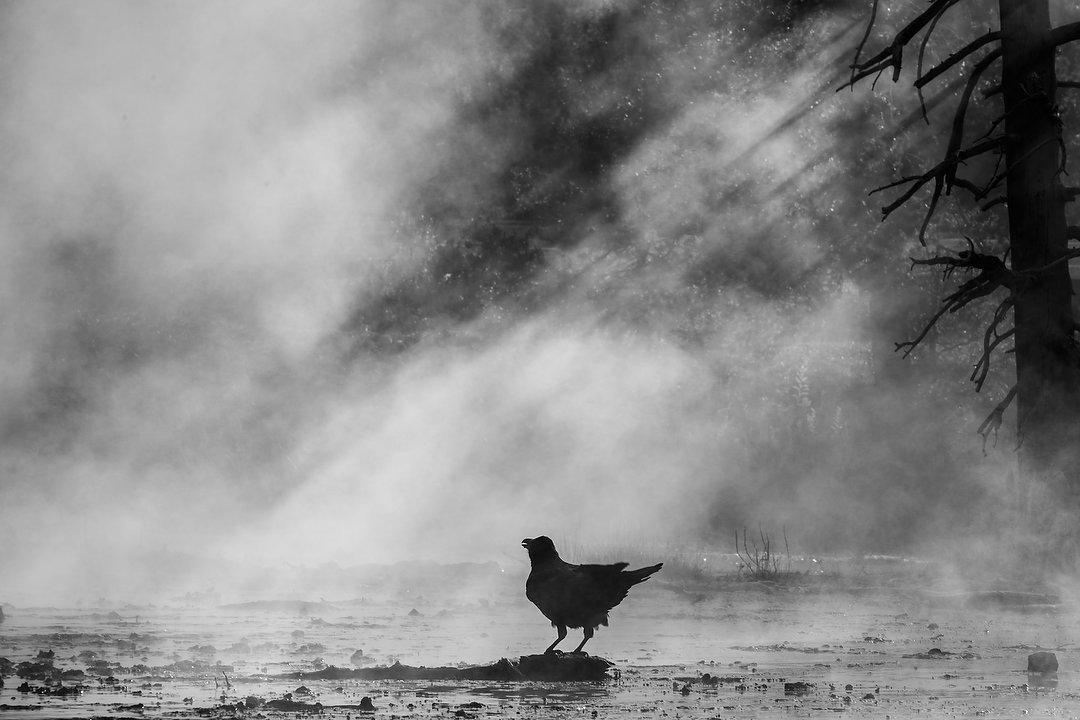
We’d hoped to visit Firehole Lake Drive on our first morning in Yellowstone, but it was closed. Luckily, Fountain Paint Pots was nearby and open. Getting to a geyser basin in the fall, shortly after sunrise, guarantees lots of steam and great light (the low angle creating shadows), and this raven made the scene even better. Nikon Z 8, Aperture Priority, Sunny white balance, ISO 64, 1/100 at f/16 in Matrix metering, -0.3 EV, Nikkor Z 24-200mm f/4-6.3 VR lens at 185mm.
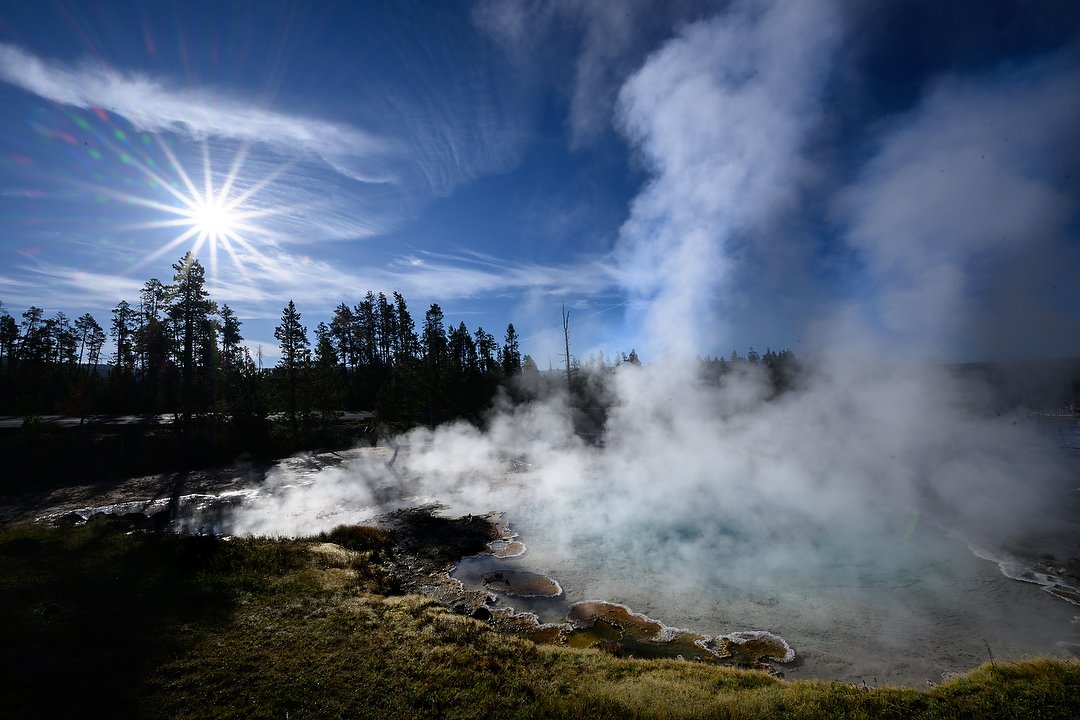
Once I crossed to the other side of the steam at Fountain Paint Pots, I used a small aperture on my lens to create a “sun star,” and underexposed to make the sky darker and thus a deeper blue. Nikon Z 8, Aperture Priority, Sunny white balance, ISO 64, 1/160 at f/22 in Matrix metering, -1.3 EV, Nikkor Z 14-30mm f/4 S lens at 14mm.

A polarizing filter is needed if you want to get the most color out the bacterial mats at Midway Geyser Basin. It removes the reflections that otherwise hide much of the color. This view is seen from the bridge leading to the basin. Nikon Z 8, Aperture Priority, Sunny white balance, ISO 160, 1/250 at f/10 in Matrix metering, -0.7 EV, Nikkor Z 14-30mm f/4 S lens at 15mm.
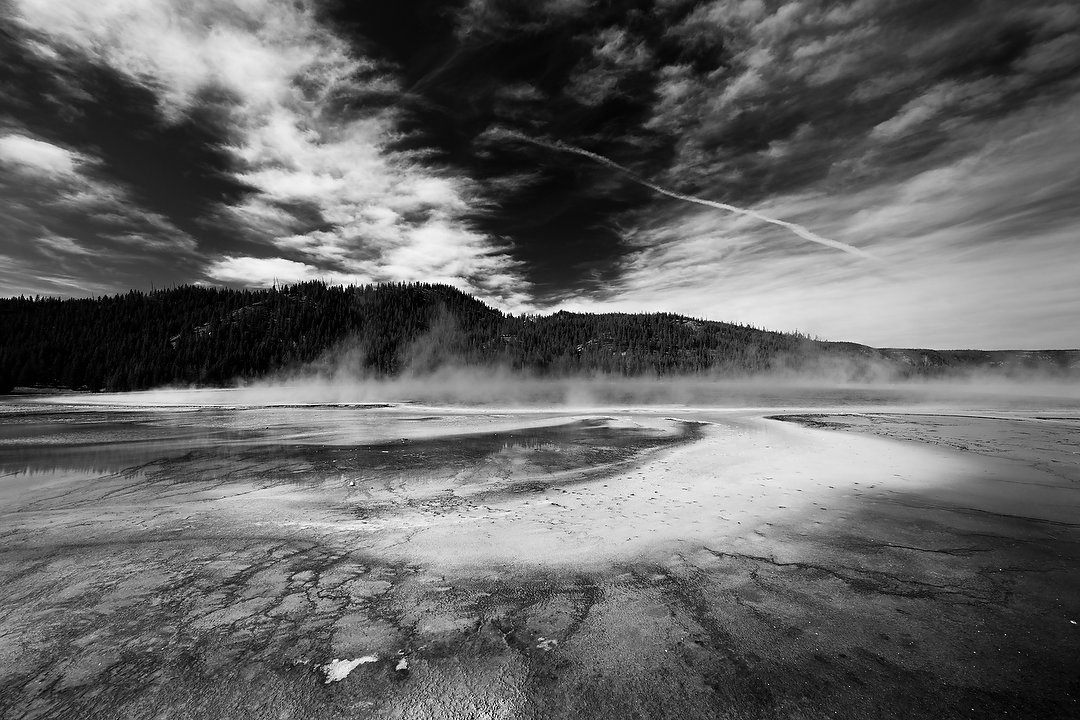
Grand Prismatic is one of the largest hot springs in the world. In this case I used the black-and-white mode on my camera to show off the contrast between the light and dark tones in the scene. Nikon Z 8, Aperture Priority, Sunny white balance, ISO 100, 1/100 at f/10 in Matrix metering, -0.3 EV, Nikkor Z 14-30mm f/4 S lens at 14mm.
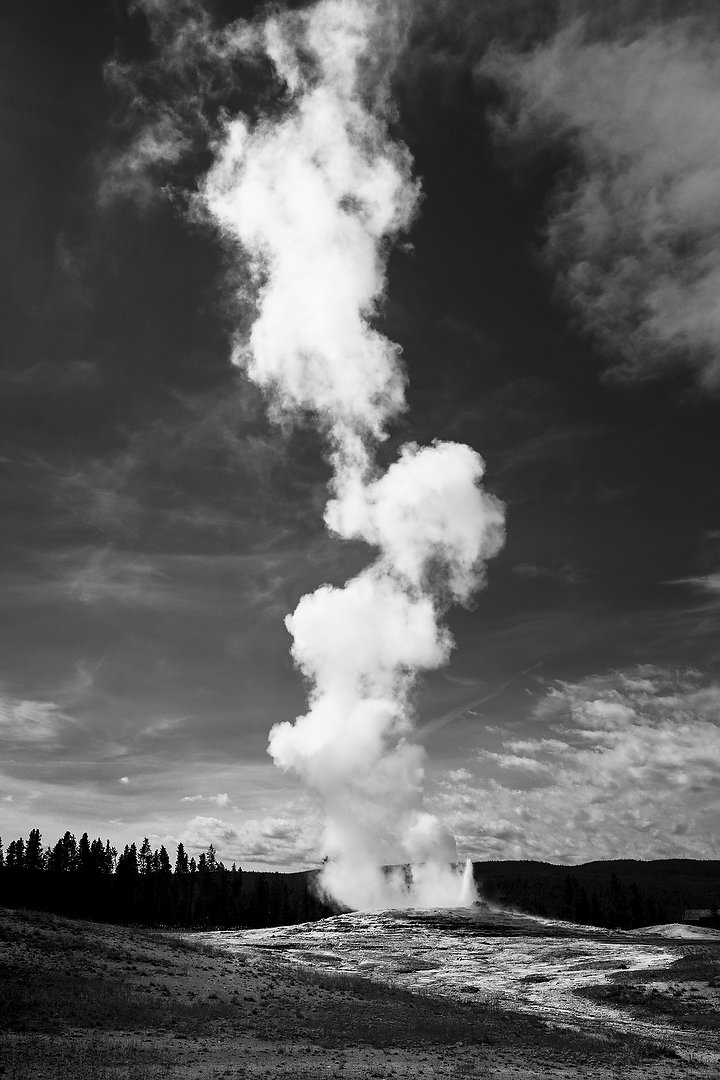
A visit to Yellowstone wouldn’t be complete without seeing Old Faithful. Once again I chose to shoot in black-and-white, which pays tribute to the first photos made of it in the late 1800s. Those pictures were a driving force behind it becoming the world’s first national park. Nikon Z 8, Aperture Priority, Sunny white balance, ISO 125, 1/500 at f/8 in Matrix metering, +0.3 EV, Nikkor Z 24-200mm f/4-6.3 VR lens at 31mm.
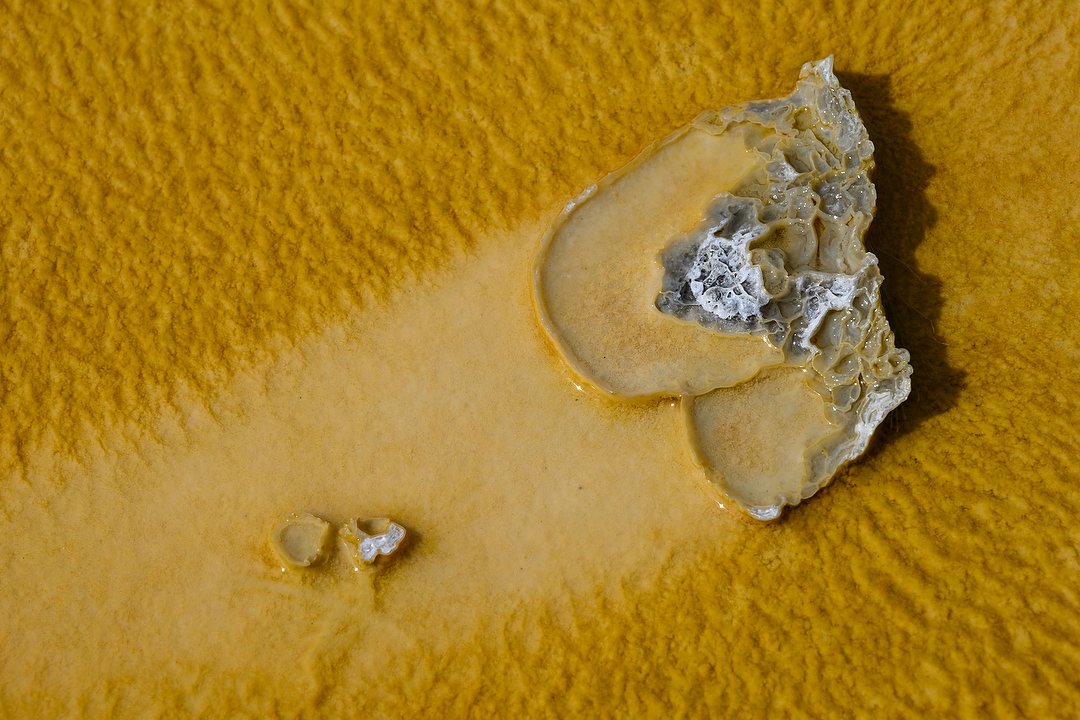
On a trip where we’re seeing lots of grand landscapes, I always remind my group to also keep an eye out for the little details. This was a small part of a hot spring in the Old Faithful geyser area. Nikon Z 8, Aperture Priority, Sunny white balance, ISO 100, 1/160 at f/14 in Matrix metering, 0.0 EV, Nikkor Z 24-200mm f/4-6.3 VR lens at 200mm.

The hot springs sometimes expand, and the water they produce then kills the trees they encounter, turning them into white ghosts of their former selves. Nikon Z 8, Aperture Priority, Sunny white balance, ISO 64, 1/160 at f/8 in Matrix metering, -0.3 EV, Nikkor Z 24-200mm f/4-6.3 VR lens at 91mm.
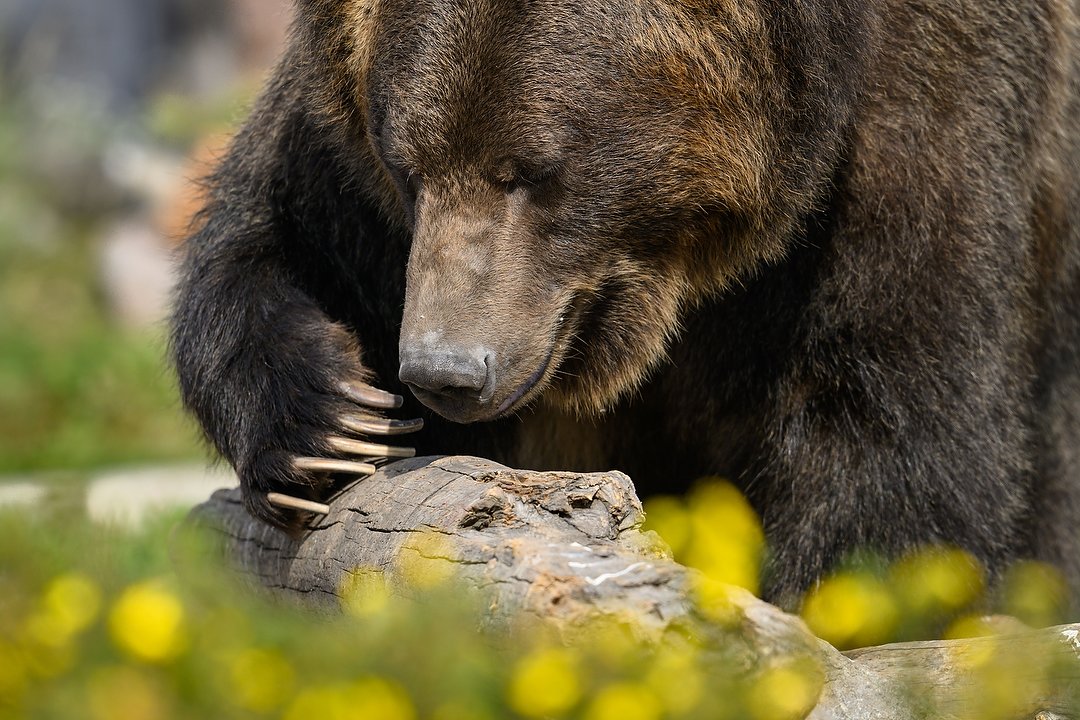
West Yellowstone is one of the closest locations you can find lodging outside the park, and it’s also home to the Grizzly and Wolf Discovery Center. We spent part of an afternoon there photographing their inhabitants. Nikon Z 8, Aperture Priority, Sunny white balance, ISO 450, 1/1000 at f/6.3 in Matrix metering, -0.3 EV, Nikkor Z 180-600mm f/5.6-6.3 VR lens at 420mm.
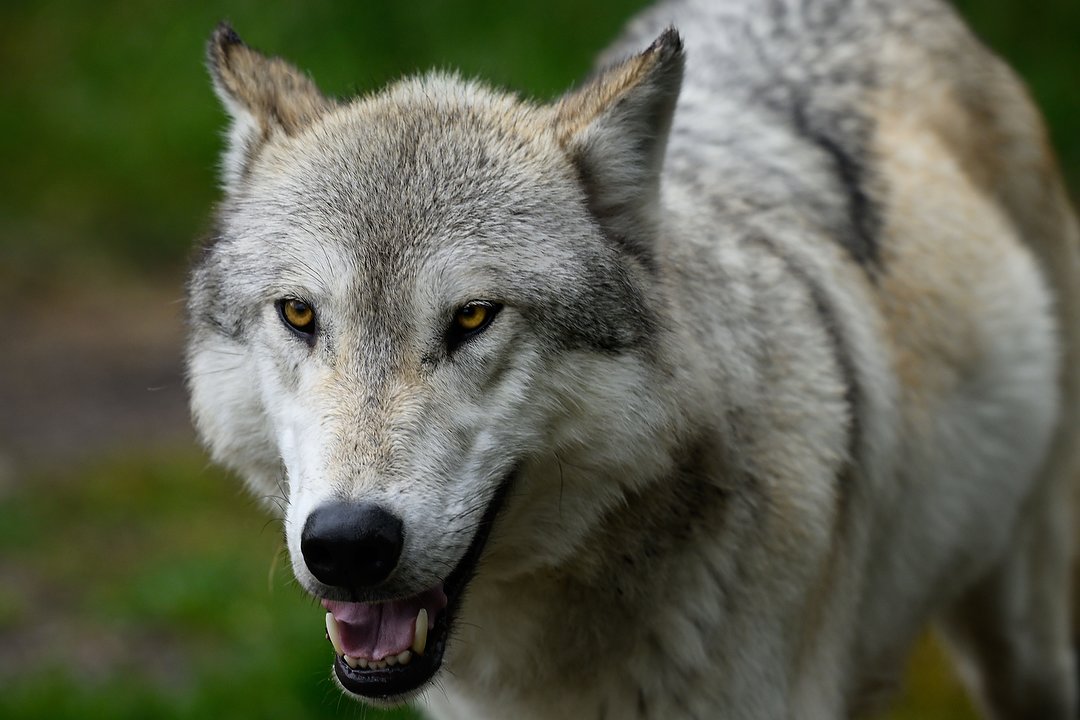
One of the wolves at the Discovery Center. The animals are kept in large, photo-friendly areas where you don’t have to shoot through fencing. The center also offers a lot of interesting education about the wildlife it manages, and regular talks throughout the day. Nikon Z 8, Aperture Priority, Sunny white balance, 5210K, ISO 1100, 1/1600 at f/6 in Matrix metering, -0.3 EV, Nikkor Z 180-600mm f/5.6-6.3 VR lens at 460mm.
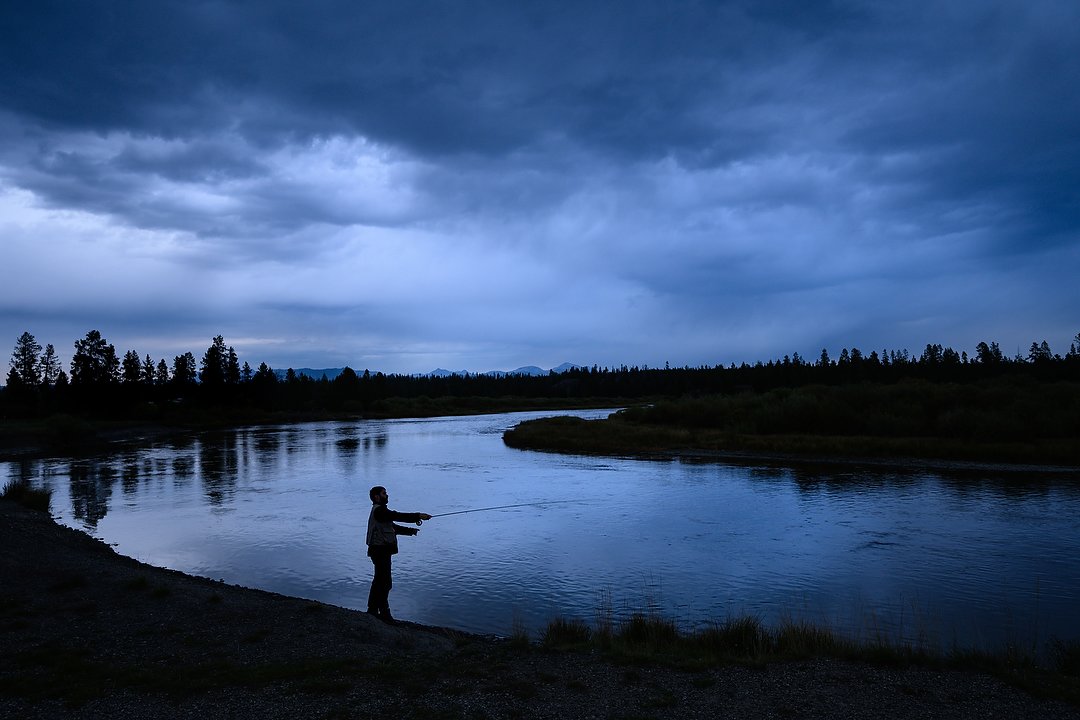
Rain was in the forecast the second day for our sunset shoot, but we still went out, and got lucky. Not only was there a fly fisherman at the spot we’d picked, but also a dramatic sky. Once the rain did start, we left for an early dinner. So a win-win! Nikon Z 8, Aperture Priority, Sunny white balance, ISO 400, 1/25 at f/5.6 in Matrix metering, +0.7 EV, Nikkor Z 14-30mm f/4 S lens at 23mm.
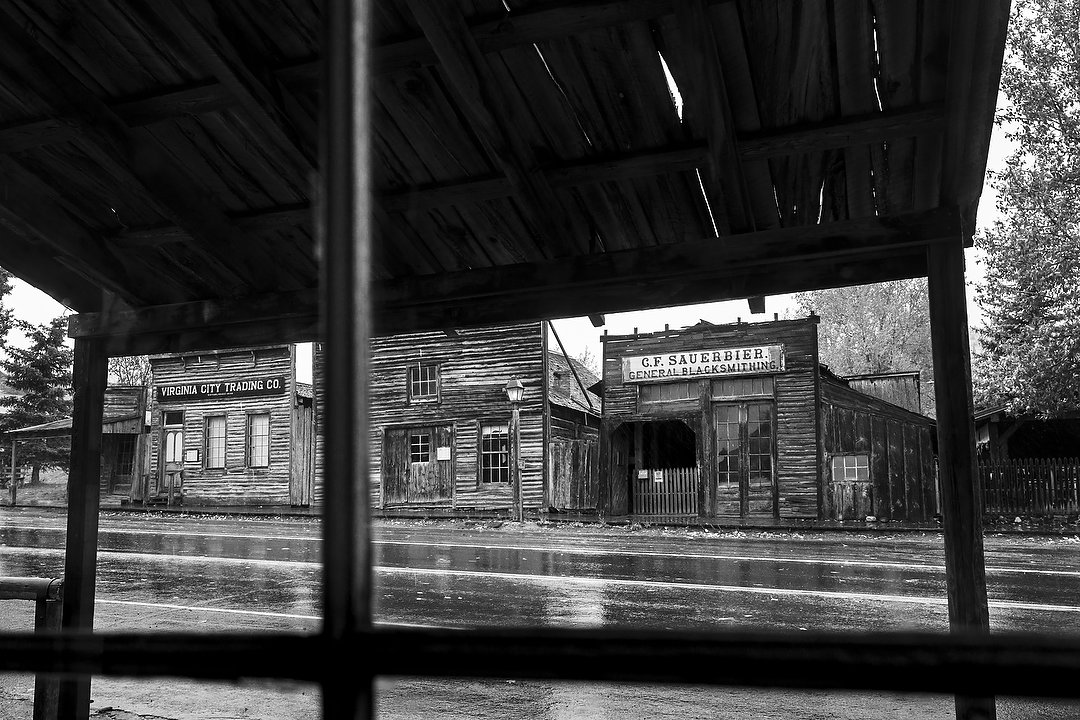
On day three we made the drive to Virginia City and Nevada City, two ghost towns in Montana. It was cool and rainy, but there were plenty of overhangs to work from. Some of the old building were open, too, so we could duck into them as well. Nikon Z 8, Aperture Priority, Sunny white balance, ISO 640, 1/60 at f/8 in Matrix metering, -1.0 EV, Nikkor Z 24-200mm f/4-6.3 VR lens at 27mm.
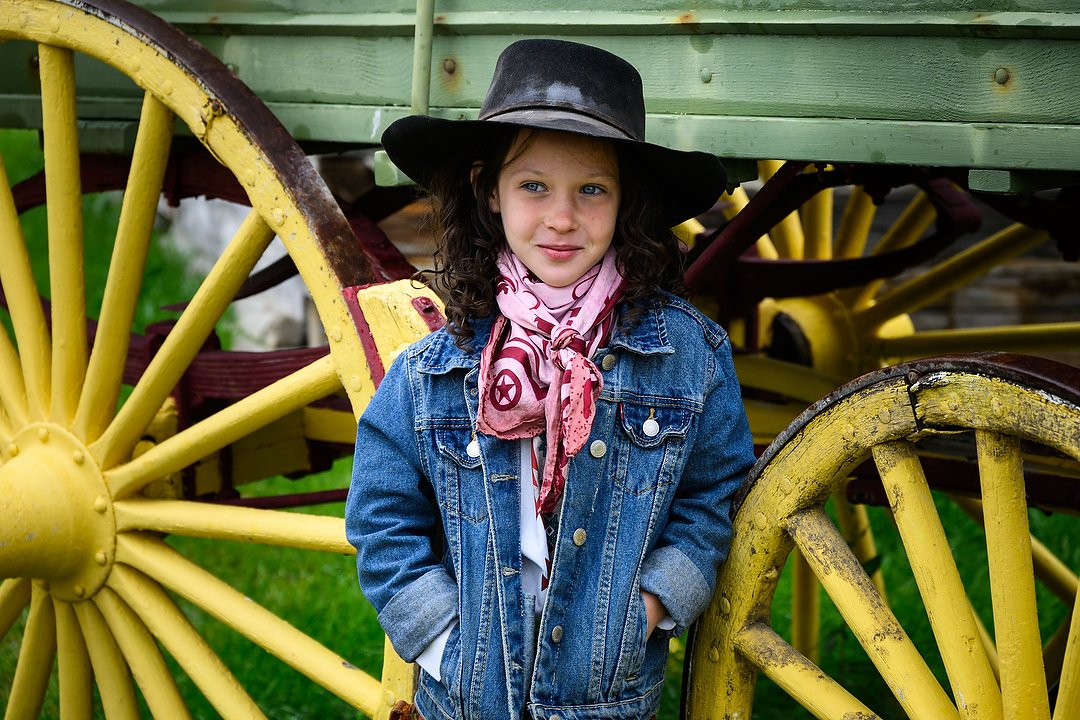
In Nevada City, my co-leader Donnie had arranged for a few models to meet us. The rain had taken a break by then, so I took advantage of that and brought our group and the models outside to take make the most of the soft light. Addy was the youngest of the three, and has plans to be a rodeo star when she grows up. Nikon Z 8, Aperture Priority, Sunny white balance, ISO 1000, 1/400 at f/6.3 in Matrix metering, +0.3 EV, Nikkor Z 24-200mm f/4-6.3 VR lens at 110mm.
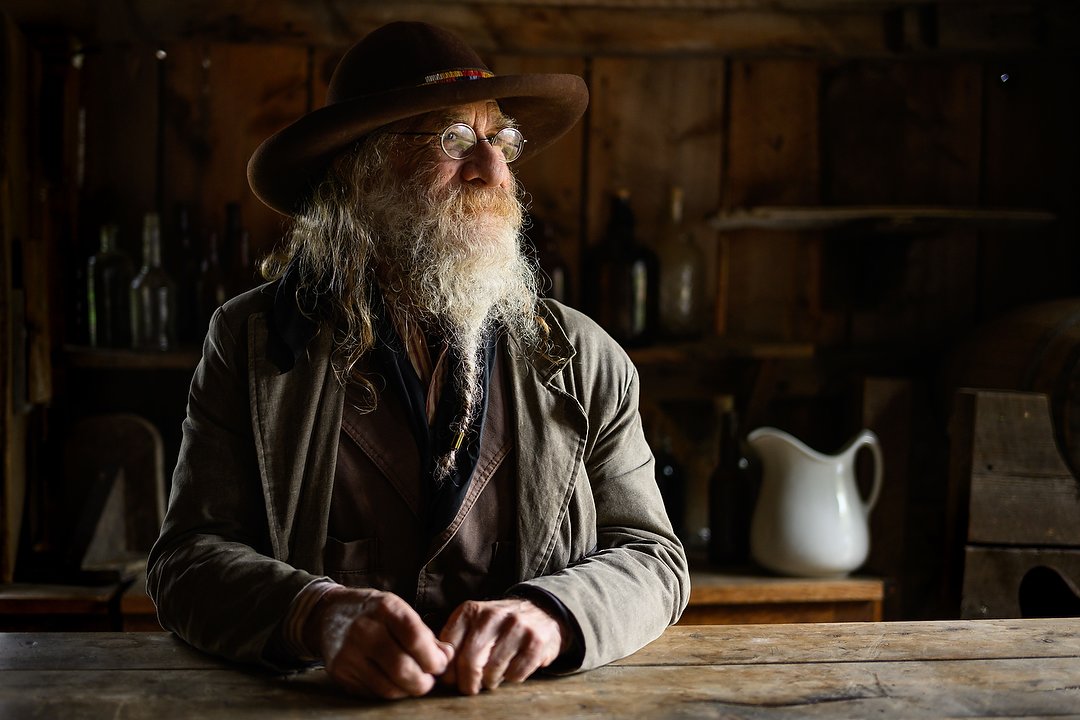
Another of our models was Harlan. With the rain beginning again, I moved everyone inside, where we used the window light. Nikon Z 8, Aperture Priority, Sunny white balance, ISO 640, 1/125 at f/2 in Matrix metering, -1.3 EV, Nikkor Z 40mm f/2 lens.
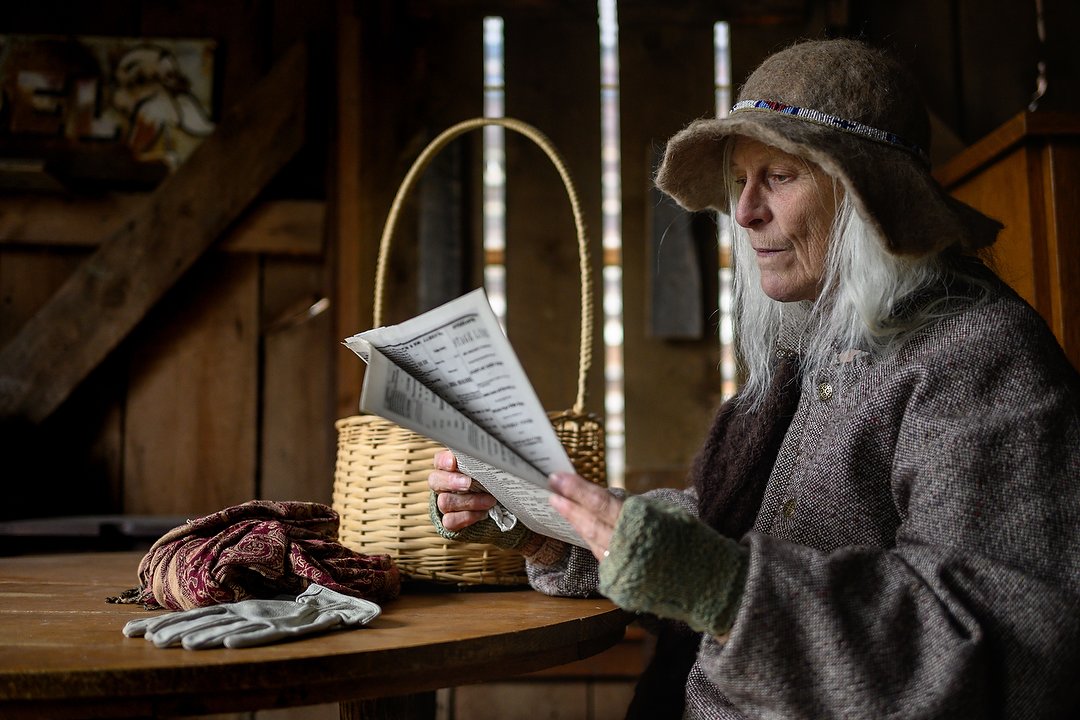
Again taking advantage of window light, I had Joal (Harlan’s wife) pose at a table in the saloon. Nikon Z 8, Aperture Priority, Sunny white balance, ISO 640, 1/400 at f/2 in Matrix metering, -1.3 EV, Nikkor Z 40mm f/2 lens.
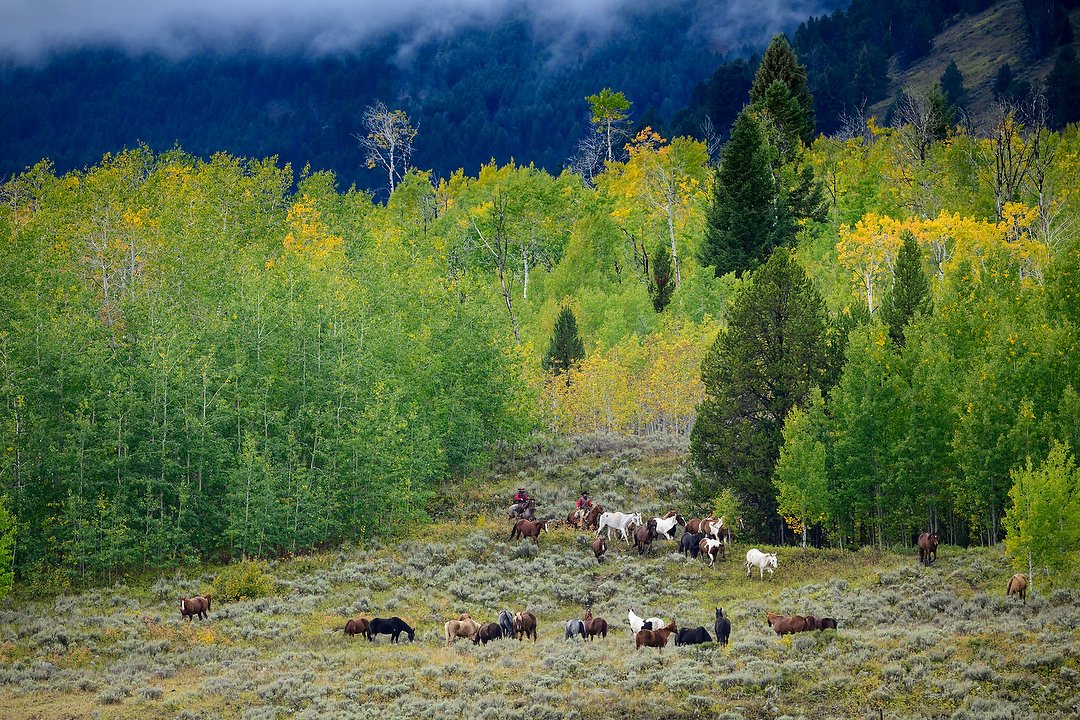
Thankfully, the rain had stopped by the time we arrived at the Parade Rest Guest Ranch outside West Yellowstone for our shoot later that day. Some of their wranglers herded a group of horses our way for photos. Nikon Z 8, Aperture Priority, Sunny white balance, ISO 1250, 1/1000 at f/6 in Matrix metering, 0.0 EV, Nikkor Z 180-600mm f/5.6-6.3 VR lens at 460mm.
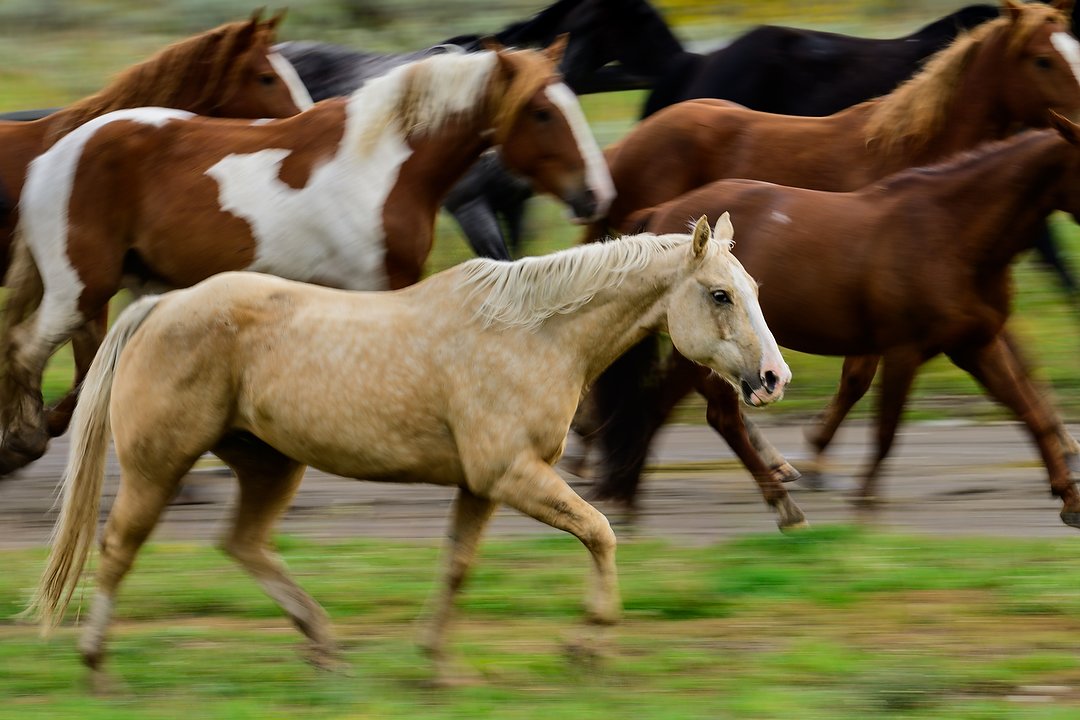
As the horses ran by, I decided to do some “panning.” That’s when you change your camera’s exposure settings to force a very slow shutter speed, then follow the action while taking pictures. The goal, as this shows, is to keep sharpness in one area while letting the rest of the motion create blur. Nikon Z 8, Aperture Priority, Sunny white balance, ISO 200, 1/30 at f/11 in Matrix metering, 0.0 EV, Nikkor Z 180-600mm f/5.6-6.3 VR lens at 300mm.
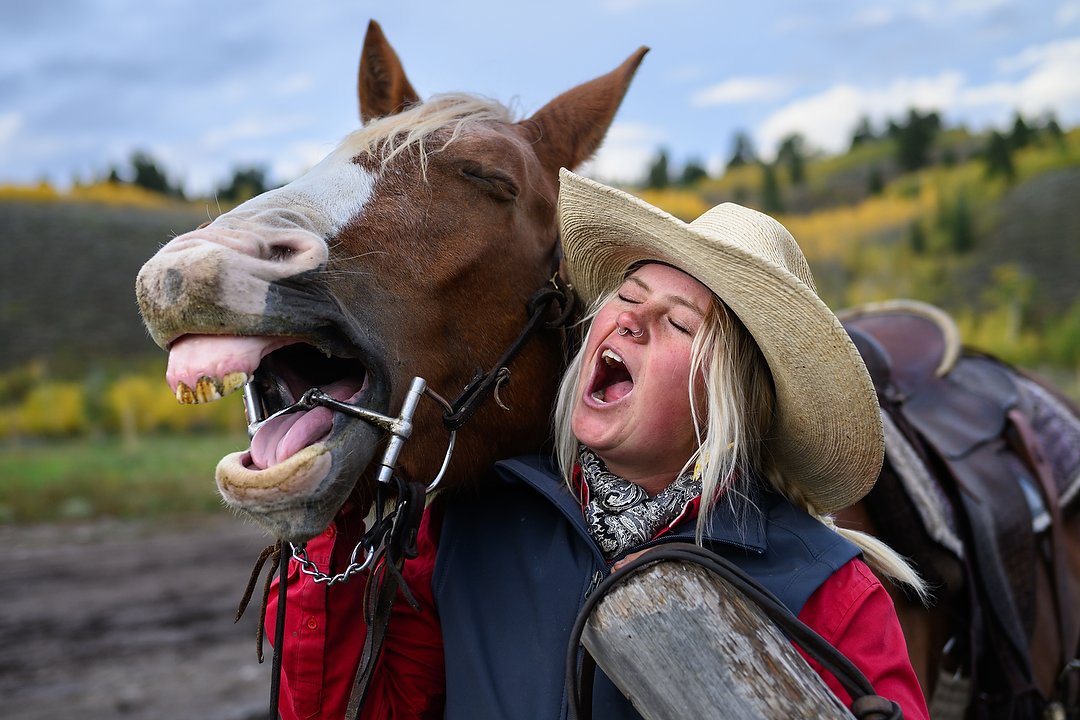
Colby was posing with her horse Sunday when it started yawning. She decided to join in. Nikon Z 8, Aperture Priority, Sunny white balance, ISO 200, 1/640 at f/2.8 in Matrix metering, 0.0 EV, Nikkor Z 40mm f/2 lens.
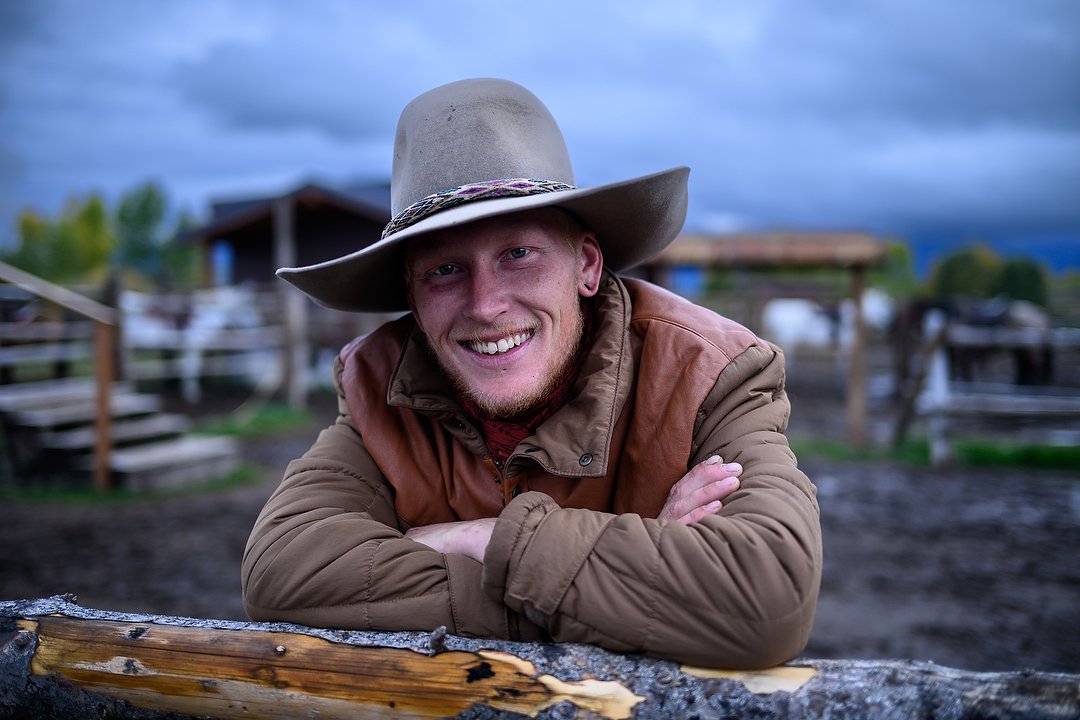
Zach was also happy to pose for us, and I used my little 40mm f/2 lens to create extremely shallow depth of field (makes for a very out of focus background, just like in the previous photo of Colby). Small, light and inexpensive, this lens is often with me on a trip where I plan to photograph people. Nikon Z 8, Aperture Priority, Sunny white balance, ISO 400, 1/320 at f/2 in Matrix metering, 0.0 EV, Nikkor Z 40mm f/2 lens at 40mm.
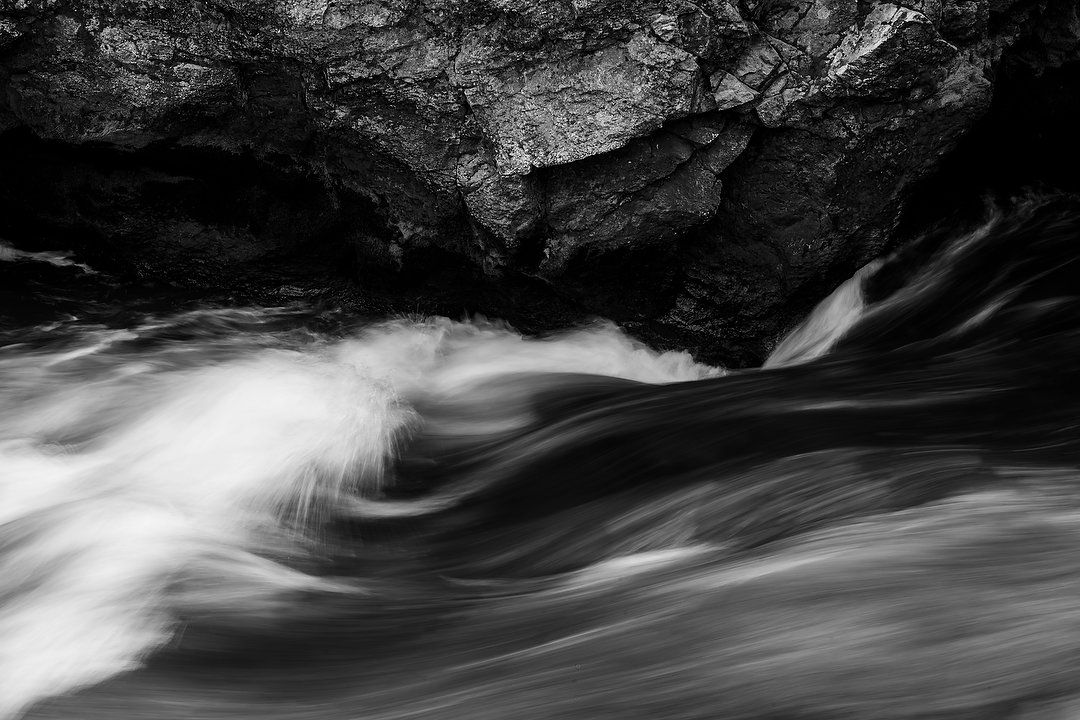
On our fourth and final day, the first stop was at Yellowstone Falls and the Grand Canyon of the Yellowstone. Here I’m near the top of the falls, using my tripod and a slow shutter speed to create this image. It was the only time the entire trip I used my tripod. Nikon Z 8, Aperture Priority, Sunny white balance, ISO 32, 1/4-second at f/20 in Matrix metering, -1.0 EV, Nikkor Z 24-200mm f/4-6.3 VR lens at 73mm.
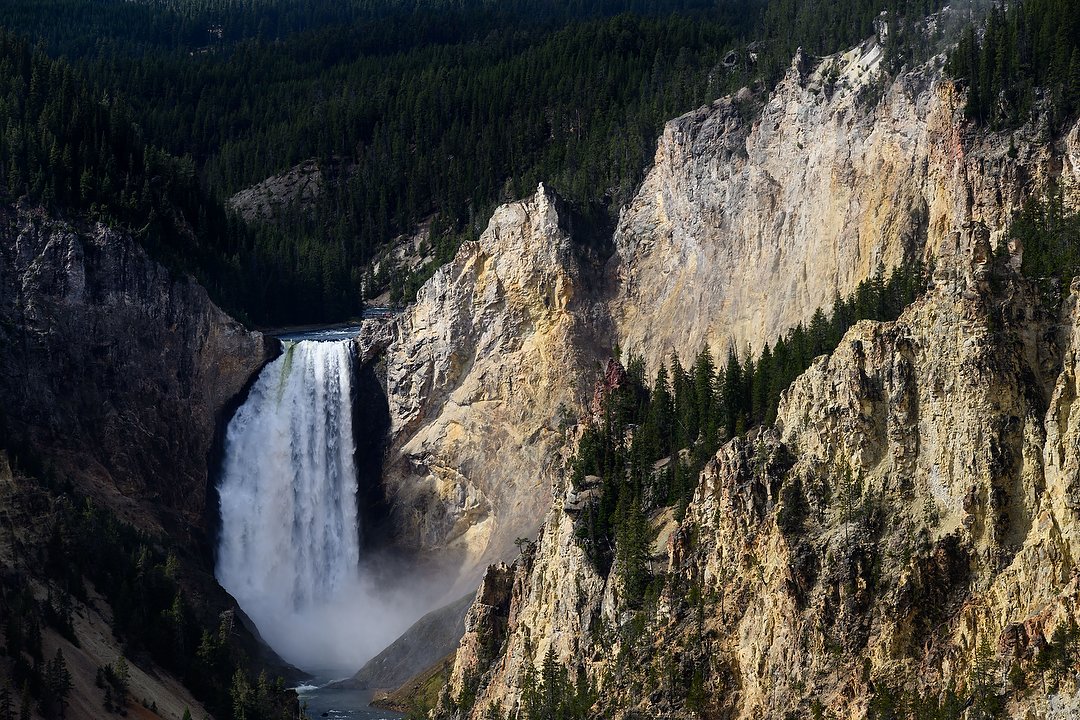
After leaving the top of the falls, we drove to the other side and Artist Point for what’s considered the classic view of the canyon and falls. Once again, we got lucky, as the sun came out for the thirty minutes we were there. The resutling boost in contrast and color saturation really made the photo “pop,” and was the only time all day we had sunshine. After that we stopped for lunch nearby, by the end of which a light snowfall had started. Nikon Z 8, Aperture Priority, Sunny white balance, ISO 100, 1/125 at f/11 in Matrix metering, -0.3 EV, Nikkor Z 24-200mm f/4-6.3 VR lens at 140mm.
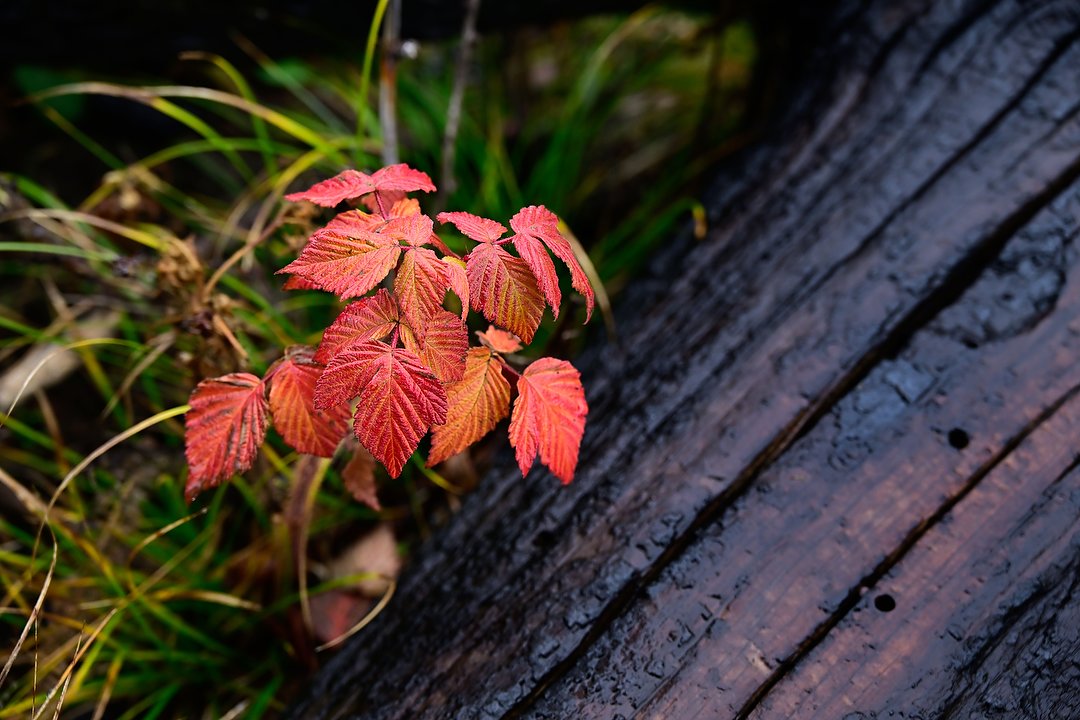
Snow flurries alternated with light rain over the next couple of hours. That wetness created a soft glow to the bits of color we found, like these leaves in an area that had been the scene of a forest fire years earlier. Nikon Z 8, Aperture Priority, Sunny white balance, ISO 640, 1/80 at f/7.1 in Matrix metering, -0.7 EV, Nikkor Z 24-200mm f/4-6.3 VR lens at 94mm.
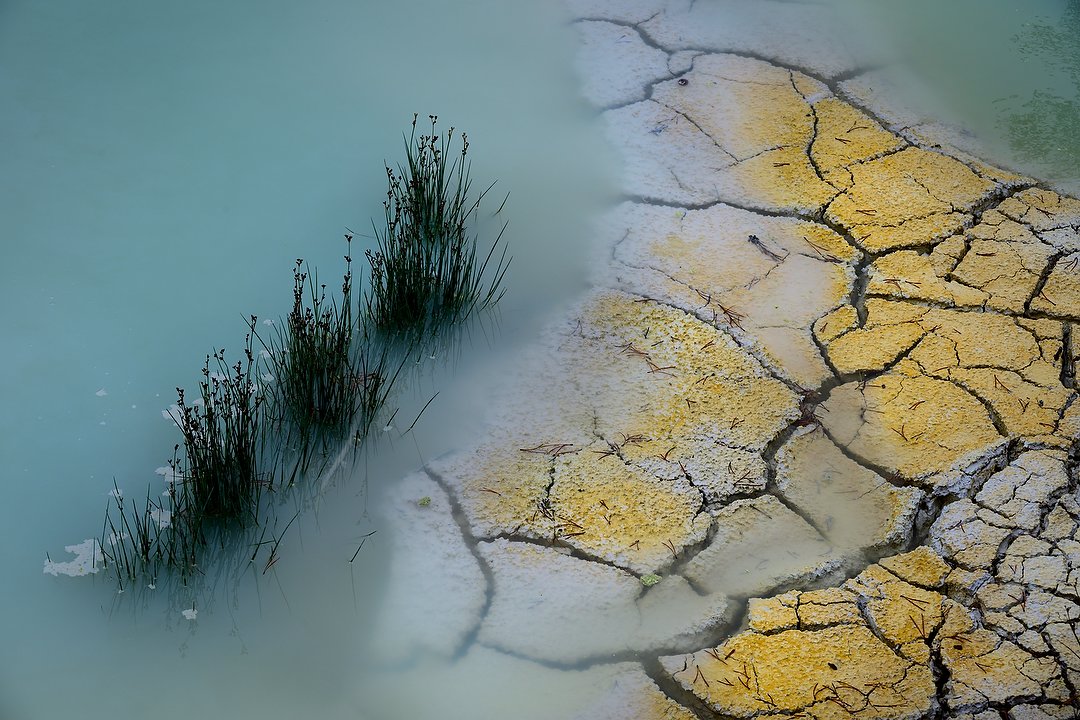
I’d not been to the West Thumb Geyser Basin before, but one of our group had and suggested a stop. Great idea, as it offered some nice photo opportunities, like this detail in one of the hot spring pools. Nikon Z 8, Aperture Priority, Sunny white balance, ISO 160, 1/250 at f/11 in Matrix metering, 0.0 EV, Nikkor Z 24-200mm f/4-6.3 VR lens at 82mm.
(If you like this story, please share it with your friends and let them know about the links on photography that I post on my business Facebook page. I’m also on Instagram and Twitter, @reedhoffmann. And if you’re curious about the workshops I teach, you can find them here. Finally, you can subscribe to this blog on my home page.)

